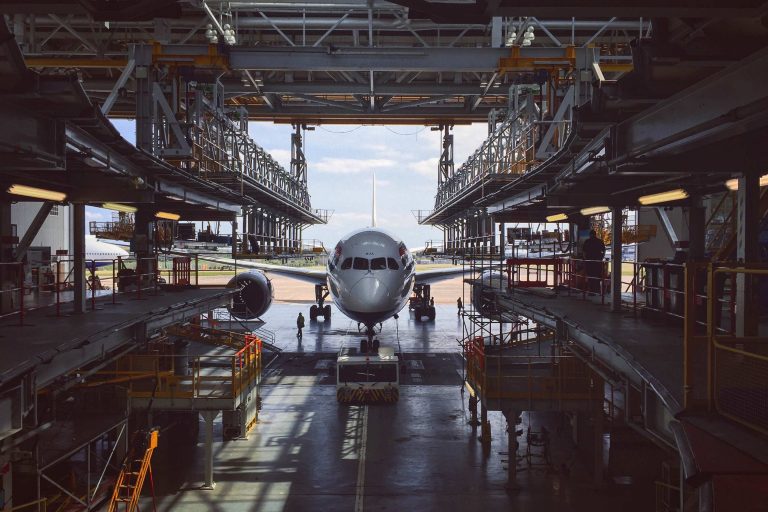
In the airline industry, aircraft maintenance is vital to both safety and reliability. As demand grows for efficient air travel, airports are rethinking how power is delivered within their maintenance bays—spaces that keep operations moving without delays.
One major shift involves replacing overhead cabling with ground-level busway drops. This approach reduces hazards, clears up work areas, and makes daily tasks easier for maintenance crews. Better access to power and fewer obstacles on the floor contribute to a more practical, safer environment for technicians handling time-sensitive repairs.
Why Overhead Cabling Is Being Replaced in High-Risk Maintenance Zones
High-risk spots in maintenance bays, like aircraft jacking points and service pits, come with unique challenges when powered by overhead cabling. That old method can lead to cluttered spaces, raising the chance of accidents for the maintenance teams. Ground-level busway systems offer a cleaner layout, making it easier to organize electrical setups without worrying about cables hanging above.
With a well-designed bus way power system, technicians face fewer tripping hazards and can move freely through maintenance zones. Clear walkways support steady workflows, reducing the chance of delays caused by avoidable incidents. Easy access to tools and equipment not only saves time but also supports safer, more controlled repairs during high-pressure maintenance windows.
How Ground-Level Busways Improve Load Management and Operational Efficiency
Ground-level busway drops make managing power loads easier for technicians working on aircraft. The straightforward design gives them quick access to power connections, allowing tools to be moved or adjustments made without delay. The improved accessibility lets technicians focus on their tasks rather than dealing with power supply complications.
Real-time energy tracking offers additional benefits. Monitoring usage helps teams stay aware of power demands and avoid unexpected issues. Continuous visibility supports better planning and maintains smooth operations during high-pressure scenarios. To boost productivity further, routine energy audits promote both efficiency and safety.
When Retrofit Timelines Disrupt Workflow Less Than Expected
Installing these ground-level busway systems has gotten much quicker. Airports can now handle retrofits overnight, so daily operations aren’t affected much. For example, a full-length bay can be retrofitted in under eight hours with a properly coordinated crew. This lets the transition happen smoothly while still meeting aircraft maintenance needs.
Using pre-drilled ports during setup makes things even faster and fits well with airport schedules. Planning ahead in this way means maintenance teams can keep working while the upgrades happen. A smart approach to timing, like coordinating with crews for the best schedule, cuts down on downtime and improves safety.
Where Safety Standards Are Forcing Electrical Redesigns
Updated safety rules are changing how airports think about their electrical systems. Overhead cables, once common in maintenance areas, now pose real dangers—especially in places where fast access to power is important. Cables suspended above work zones can sag or shift over time, making them unpredictable and harder to manage safely. New regulations are pushing airports to reconsider older methods in order to improve safety.
Ground-level busway drops are becoming the go-to solution. They make it easier to follow safety guidelines and reduce the risk of injuries from overhead wires. Plus, emergency crews can get to power sources faster. Giving maintenance staff regular training on these systems helps them get comfortable with the changes and stick to safety procedures.
Why Modular Power Distribution Is Becoming a Facility Investment Priority
Airports are showing more interest in modular power distribution systems. These systems are flexible and can handle different types of aircraft or changing maintenance needs. For example, modular panels can be rearranged without rewiring, letting teams reconfigure power access points in just a few minutes. That flexibility helps crews adapt quickly, which is important when things get busy.
There are also long-term savings to consider. Modular systems often cost less to maintain because they’re easier to inspect and fix. Technicians can often complete routine visual checks without shutting down operations, saving both time and resources. To keep them working at their best, it’s smart to review their performance regularly. That way, the setup can keep up with changing demands.
Switching to ground-level busway systems is more than a safety upgrade—it’s a shift toward smarter, more flexible maintenance spaces. Removing overhead cables clears walkways, reduces risk, and helps crews stay focused on time-sensitive repairs. These systems offer quick power access, better energy tracking, and faster retrofits with minimal disruption. Airports can stay agile as aircraft technology and schedules change. Modular setups support changing needs without requiring major infrastructure changes. With proper planning, staff training, and routine performance checks, maintenance bays become safer and more efficient. This adaptability makes modular power distribution a valuable investment for both current demands and future growth.

